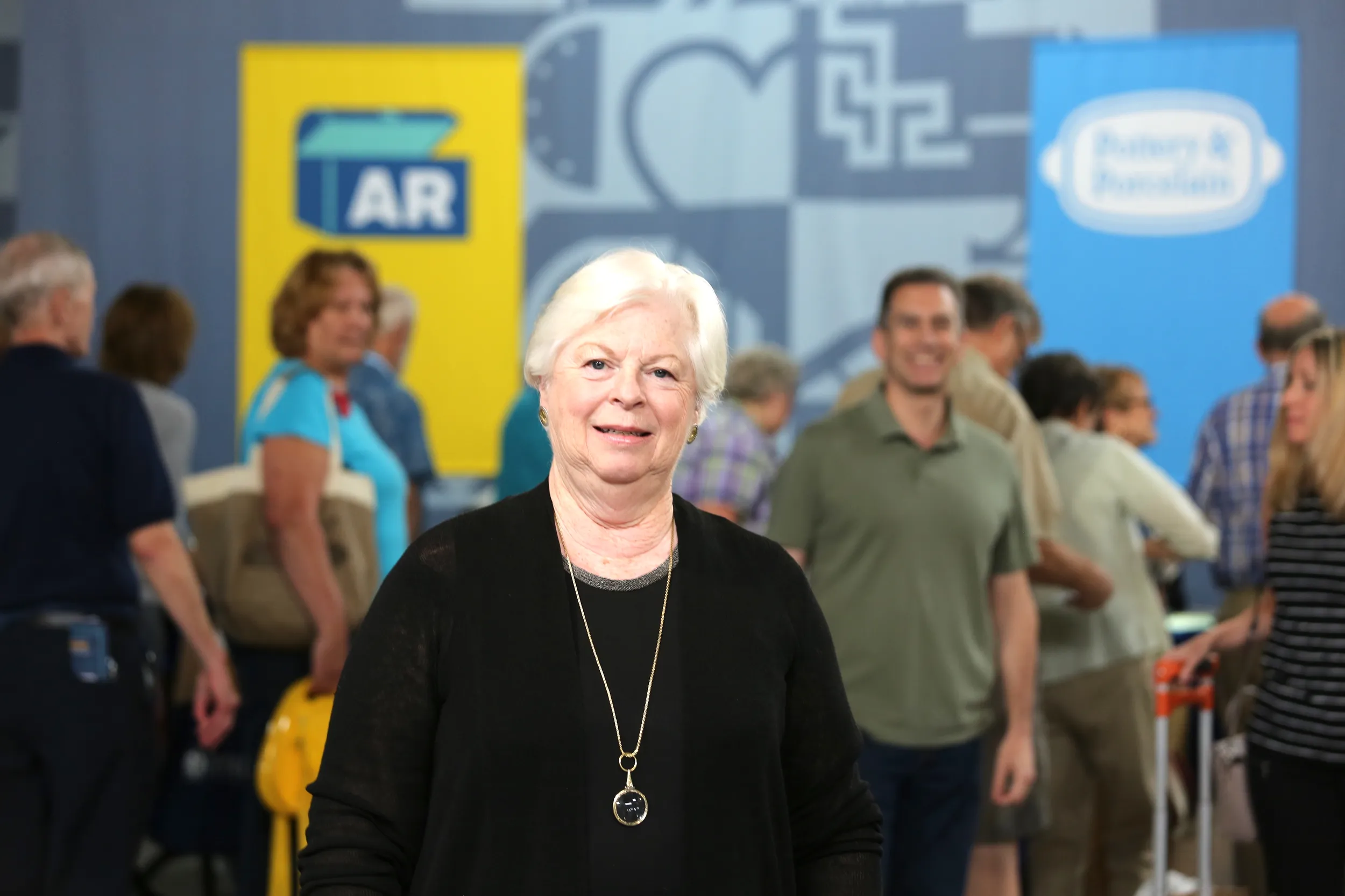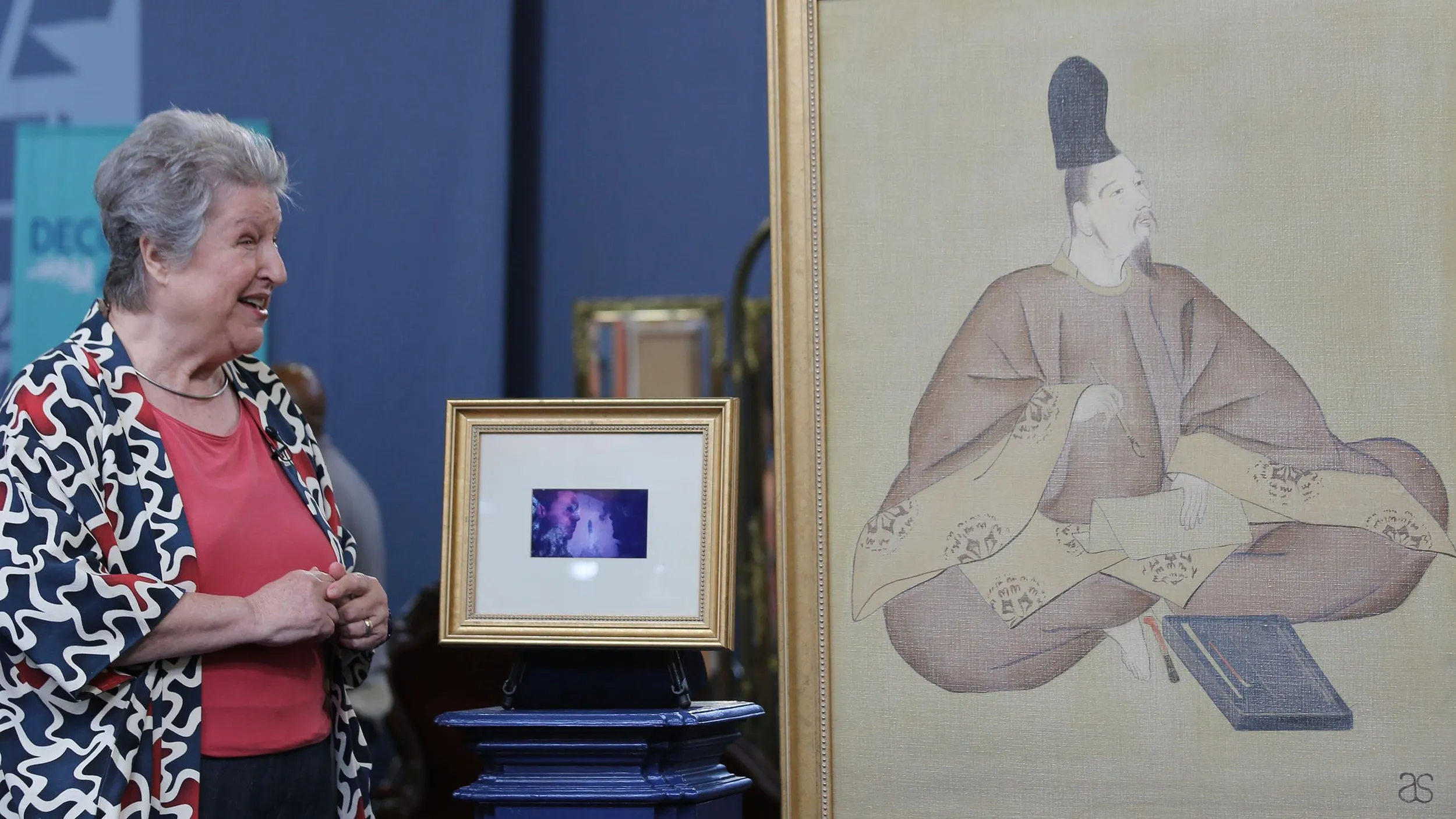GUEST: They were painted by an artist named Agnes Martin, who was in Taos in the late '40s, early '50s, or at least, that's, I think, when these were painted. They were given to a friend of hers there, who later became a friend of mine here. And she gave the two paintings to me. I have looked lots of information up, and I know a lot now about Agnes Martin, but these are very different from everything I've seen.
APPRAISER: She had a very important retrospective that was at the Tate Modern in London and also at the Guggenheim in New York, where, I'm happy to say, I spent the better part of an entire day looking at Agnes Martin…
GUEST: Oh wow.
APPRAISER: …because I find her a truly fascinating artist. She is now becoming considered one of the greatest artists of the 20th century in America in the field of abstraction and Minimalism and the various schools that swirled around all of that. Your works are amongst the earliest that one is ever likely to see. She was Canadian, she lived the early part of her life between Taos and New York. And when she was in Taos, in the late '40s and the early '50s, she began painting, initially as a portraitist and a landscapist, and then very quickly morphed into this kind of abstract amalgamation of stylistic conceits that include a little Surrealism, a little Cubism. And it's apparent now that she was sort of finding her way into abstraction, and that's the period that these are from, and they're extremely rare. These, most likely, date from the early to mid-1950s.
GUEST: Okay.
APPRAISER: We think she was doing more figural stuff through the late '40s, and by 1957, she'd gone to New York. They're also, I think, very beautiful in a quirky kind of way.
GUEST: I do, too.
APPRAISER: They're referred to in the literature as "biomorphic compositions." She used everything.
GUEST: She did…
APPRAISER: She was so clearly experimenting here.
GUEST: She did use everything, yeah.
APPRAISER: There's pen and ink, and there's gouache, and there's watercolor. They are signed, both of them, in the lower right, which is nice, because they're so atypical that it's important to be able to be sure they are what they are. That, combined with your provenance, leaves little doubt about that. She went to New York and left this behind, and hooked up with the Abstract Expressionists. And then moved into what we know as Minimalism, and made a connection with a major New York gallerist. Was there for about ten years, became extremely well-known, and then went back to Taos. Her large grid paintings-- they are regularly selling now in the multimillions of dollars.
GUEST: Right.
APPRAISER: I think the record is about $10 million or $11 million at this point.
GUEST: Wow, I didn't know that.
APPRAISER: As far as valuing these is concerned, it represents an interesting dilemma, because we have no comps for pictures like this.
GUEST: Right.
APPRAISER: One school of thought is, because they're early and so atypical, the values are very much lower than for the well-known work.
GUEST: Right.
APPRAISER: The other side of that coin, which people would like to say, is, because they're rare, they're worth more. At the moment, I think it behooves one to be on the conservative side, and my recommendation would be, and I think this is very conservative to say, possibly between $20,000 and $30,000 each as an auction estimate. But I would definitely want to boost that up to perhaps $40,000 each for an insurance value. And I think it's possible, that if they were to come up for sale-- which I don't think they will.
GUEST: No, they won't.
APPRAISER: They can very well make a good deal more than that, but we just can't say. So thank you so much.
GUEST: That's wonderful.
APPRAISER: They're really exciting to see.
GUEST: Oh.
APPRAISER: I love her work and I've never seen anything like this.
GUEST: I love them, too-- they hang right on my wall, so they'll go back.



